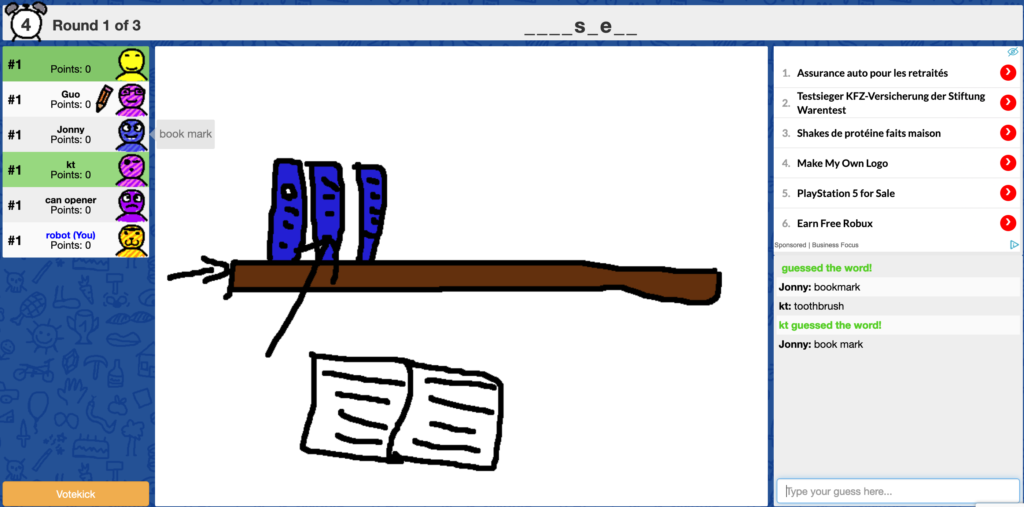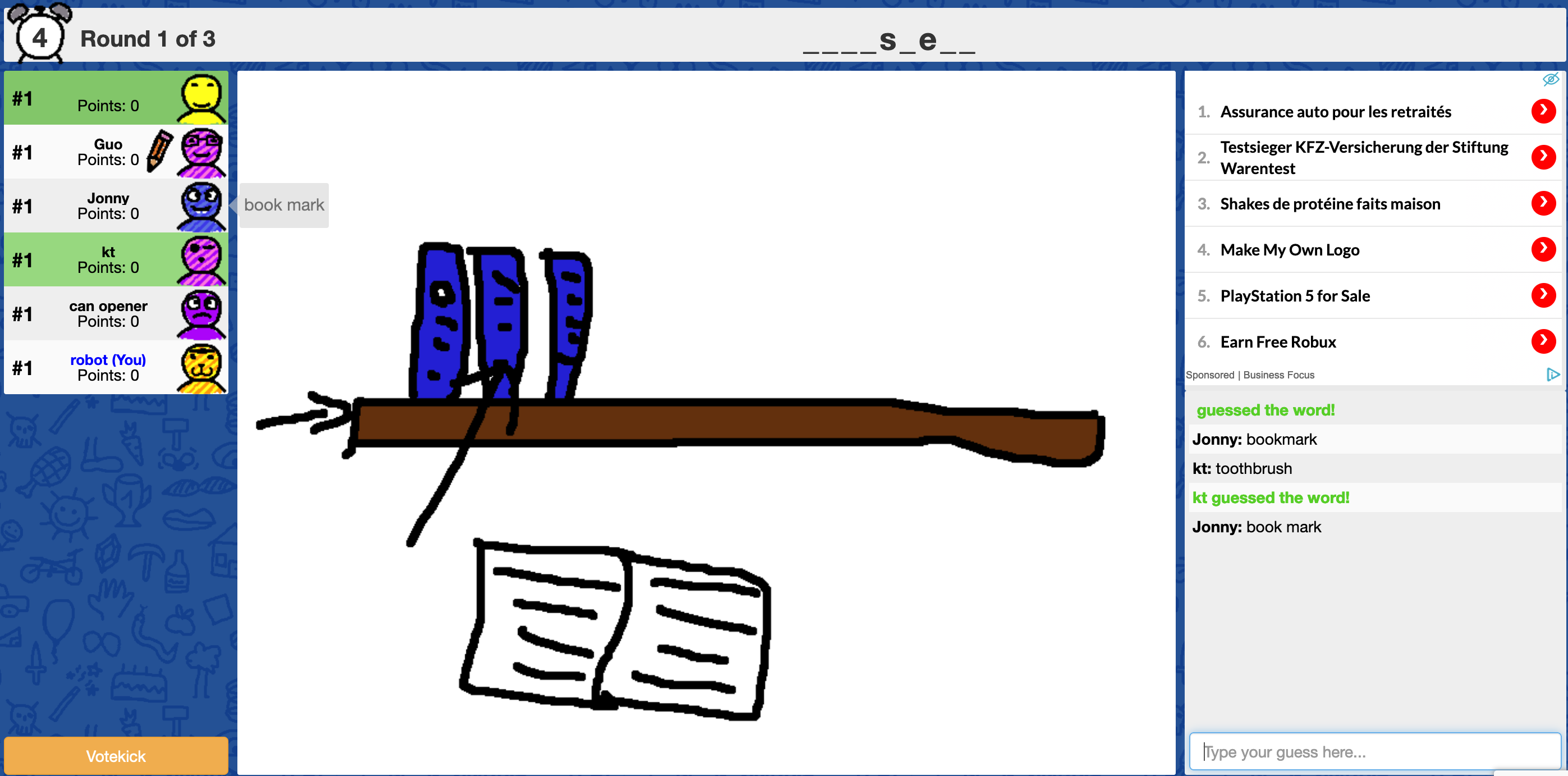
The kind of fun that is most prominent in skribbl.io is Fellowship. Its formal elements are:
Players – no limit on number of players. Players interact both competitively (multilateral competition) during their guessing turns, and collaboratively when they are the drawer.
Objective – to guess the current drawing in the fastest time.
Outcomes – players are ranked based on their cumulative performance across rounds
Rules / Procedures – players take turns being the drawer. When they are the drawer, they choose a word from a set of 3 words, and draw a representation of that word on the ‘whiteboard’. Other players try to guess the word, earning points based on how quickly they guess correctly. Drawers should not write out the word in their drawing. Players can ‘votekick’ other players if they are not following the rules.
Boundaries – time limit for each round & entire game, the whiteboard & guessing space.
The handling of the Players formal elements lead to the game’s Fellowship fun. Players both interact competitively and collaboratively within 1 round, creating complex social interactions. When players are guessing, the game creates implicit competition by showing who has guessed correctly. The game also shows wrong guesses, adding another layer of social interaction (for example, players might get frustrated as another player who fails to guess a very simple drawing, or players might have to overcome the fear of being shamed for a wrong guess). When players are drawing, they are expected to help other players by trying their best to draw a comprehensible image. If they don’t follow that expectation, they can be ‘punished’ by being kicked out of the game.
The game works because it combines both forms of interactions we would most likely have with a group of people — collaboration and competition. The changing social interactions between collaborative and competitive play keeps players engaged regardless of their role (as drawer or guesser). Its procedures ensure that no player is at a disadvantage compared to others as players take turns being the drawer, and every player has the right to ‘votekick’ other players who are not following the rules.
This game can be improved by adding more motivators to play collaboratively. The game relies on social pressure for players to be helpful with their drawing, which works well for games amongst friends, but often not for games with strangers online without previous social ties. The game has a function (that is not often used) where guessers can thumbs-up or -down the current drawing. The game can use this to give points to drawers (for e.g. each thumbs-up = +30 points, or +300 points for the person with the most number of thumbs-up at the end of the game) to motivate collaborative interactions.



